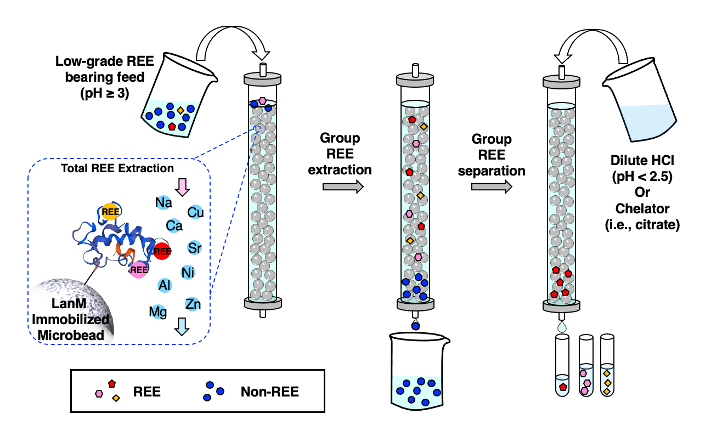A new method improves the extraction and separation of rare earth elements—a group of 17 elements critical for technologies such as smart phones and electric car batteries—from unconventional sources. New research led by scientists at Penn State and the Lawrence Livermore National Laboratory (LLNL) demonstrates how a protein isolated from bacteria can provide a more environmentally friendly way to extract these metals and to separate them from other metals and from each other. The method could eventually be scaled up to help develop a domestic supply of rare earth metals from industrial waste and electronics due to be recycled.
"In order to meet the increasing demand for rare earth elements for use in emerging clean energy technologies, we need to address several challenges in the supply chain," said Joseph Cotruvo Jr., assistant professor and Louis Martarano Career Development Professor of Chemistry at Penn State, a member of Penn State's Center for Critical Minerals, and co-corresponding authors of the study. "This includes improving the efficiency and alleviating the environmental burden of the extraction and separation processes for these metals. In this study, we demonstrate a promising new method using a natural protein that could be scaled up to extract and separate rare earth elements from low-grade sources, including industrial wastes."
Link to the full story: New, environmentally friendly method to extract and separate rare earth elements

